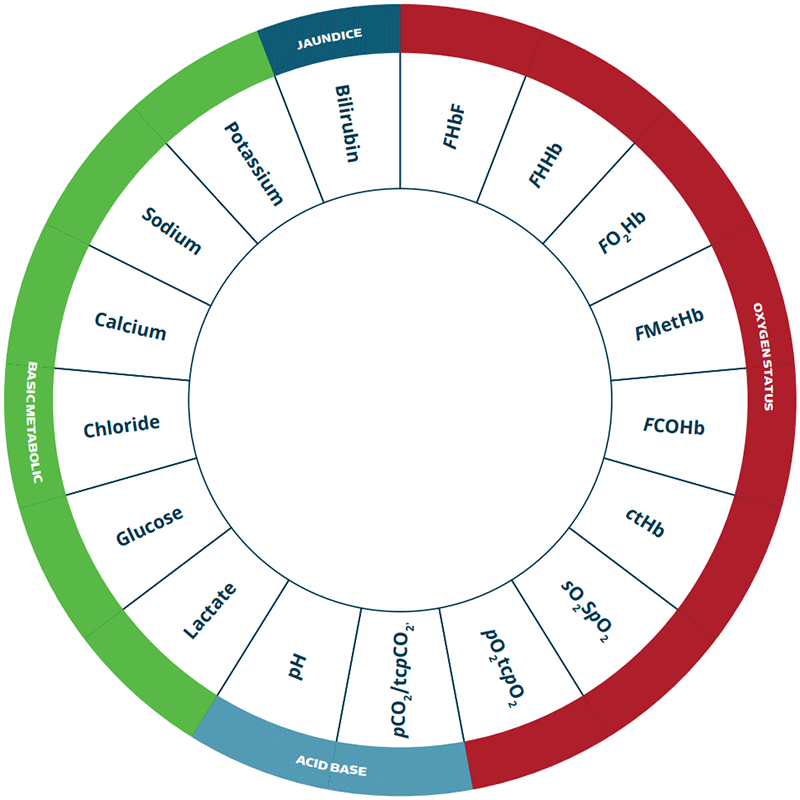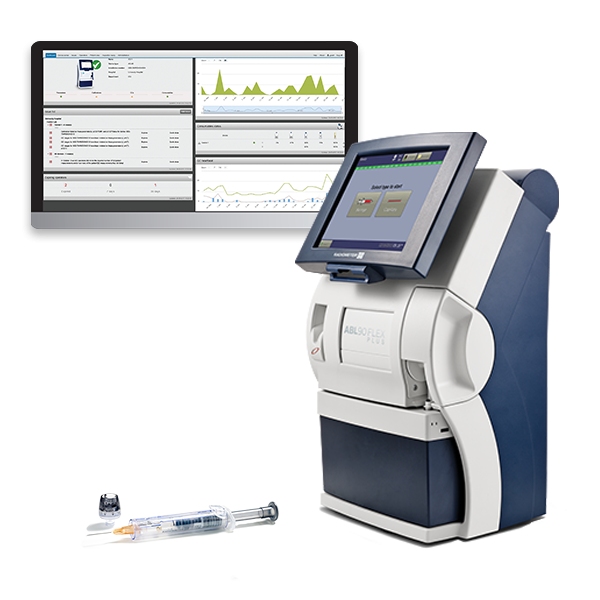
Emergency department point-of-care-testing solutions
Get the critical information you need fast - in the ED
Empower your ED with certainty
As an ED professional, you deal with uncertainty every day. Patients with diffuse symptoms require various tests, which can result in long waiting times for lab results causing overcrowding and potentially delaying timely care for your most critical patients.
Point-of-care testing (POCT) can be an asset in the emergency department, helping to speed up diagnosis and treatment processes while reducing contingencies and process costs. [1,2,3]
Radiometer, specialists in blood gas and acute care diagnostics since 1954, delivers comprehensive and connected ED POCT solutions to support fast clinical decision-making in the ED.




How you can accelerate patient flow in the ED
Whether you send the patient home or on for further treatment, ED point-of-care testing speeds up turnaround time and helps you accelerate patient flow.
Creatinine results at the point of care can help you identify patients at risk of acute kidney injury (AKI). Quickly assess your patient's kidney status before CT or MRI scans to determine if there’s a risk of contrast-induced nephropathy. [4]
The value of measuring lactate in the diagnosis of sepsis
Diagnosing patients suspected of sepsis is both challenging and complex. Often patients arriving at the ED are febrile and have shortness of breath, low blood pressure, a high pulse and respiration - symptoms which can easily be confused with other severe conditions.
For patients already suspected of sepsis, measuring the lactate levels provides useful information on the severity of the condition and enables monitoring of disease progression [5].
Point-of-care testing reduces waiting time for patient care.
- Dr. Eric Revue, Head of the Emergency Department, Chartres Hospital, France
Click here to renew consent
Discover how the Radiometer ED POCT solution supports certainty in the ED
Comprehensive and connected, the Radiometer ED point-of-care testing (POCT) solution can help reduce turnaround time by giving you reliable results at the point of care with:


ABL90 FLEX PLUS blood gas analyzer
safePICO samplers
AQURE POC IT solution
Click here to renew consent
Patient safety is at the center of everything we do and determines the procedures, our activities and all other actions performed in the ED.
- Axel Plessmann, ED Director DRK-Krankenhaus Sömmerda
Read the scientific articles on acutecaretesting.org
- Point-of-care cardiac markers in the Emergency Department are safe, reduce admissions and do not impact the 4-hour target by James Griffiths, Julian Humphrey
- POCT in emergency rooms: One key factor for process streamlining with Lean Management by Verena Stockfisch
- Decentralized clinical biochemistry - introducing point-of-care testing to the emergency environment by Patrick Plaisance
References
1. Larsson A et al. The state of point of care testing: a european perspective. Ups J Med Sci 2015; 120,1: 1-10.
2. Von Eiff W et al. POCT-Management. Klinische und Ökonomische Effekte. Heidelberg: Medhochswei verlag 2013; 189-192.
3. Smith et al., Preanalytical Errors in Point-of-Care Testing Auditing Errors of Patient Identification in the Use of Blood Gas Analyzers, Point of Care, Volume 10, Number 4, December 2011.
4. Salvagno et al, Analytical evaluation of Radiometer ABL90 FLEX PLUS enzymatic creatinine assay, Journal of Laboratory and Precision Medicine. Published: 06 August 2019.
5. Freund Y et al. Serum lactate and procalcitonin measurements in emergency room for the diagnosis and risk-stratification of patients with suspected infection. Biomarkers 2012; 17 (7): 590-596 source: https://www.radiometer. com/en/diagnostics/sepsisdetection/lactate
6. Nørgaard B, Mogensen CB. Blood sample tube transportation system versus point of care technology in an ED; effect on time from collection to reporting? A randomized trial. SJTREM 2012; 20, 71.
Cookies are used on this website
Use of cookiesPlease enter a valid email
We will be sending an e-mail invitation to you shortly to sign in using Microsoft Azure AD.
It seems that your e-mail is not registered with us
Please click "Get started" in the e-mail to complete the registration process
Radiometer is using Microsoft AZURE Active Directory to authenticate users
Radiometer uses Azure AD to provide our customers and partners secure access to documents, resources, and other services on our customer portal.
If your organization is already using Azure AD you can use the same credentials to access Radiometer's customer portal.
Key benefits
- Allow the use of existing Active Directory credentials
- Single-sign on experience
- Use same credentials to access future services
Request access
You will receive an invitation to access our services via e-mail when your request has been approved.
When you accept the invitation, and your organization is already using AZURE AD, you can use the same credentials to access Radiometer's customer portal. Otherwise, a one-time password will be sent via e-mail to sign in.
